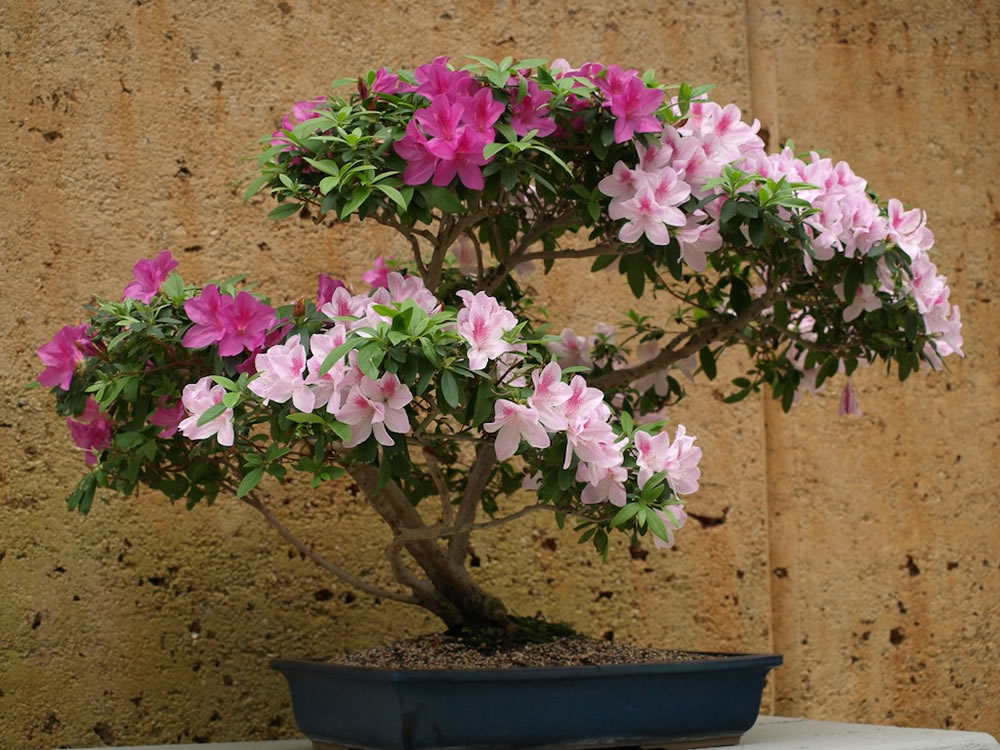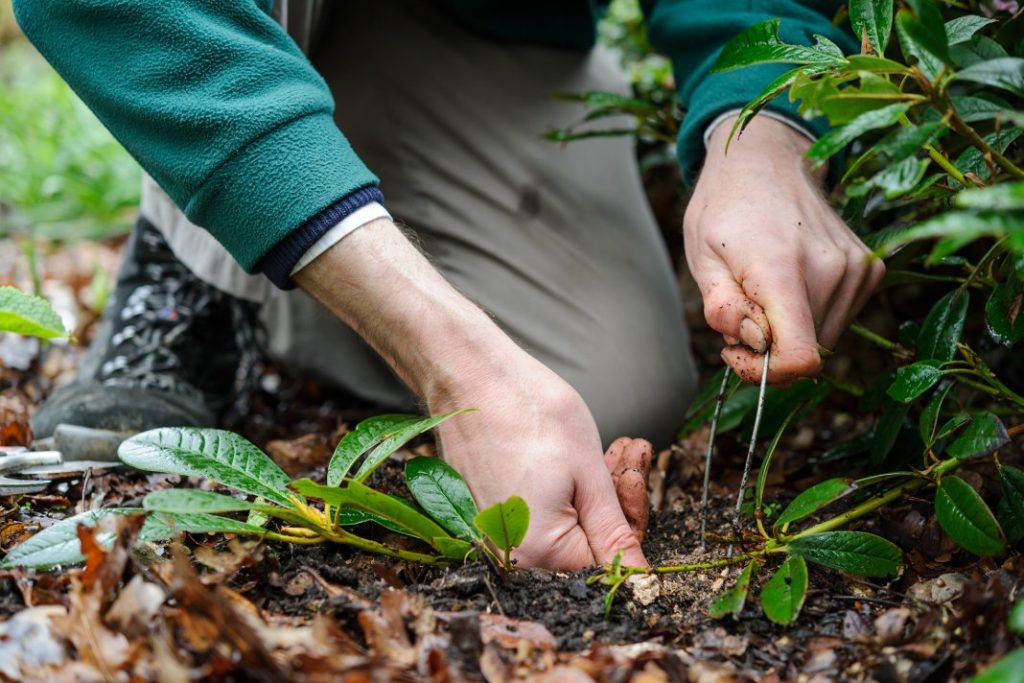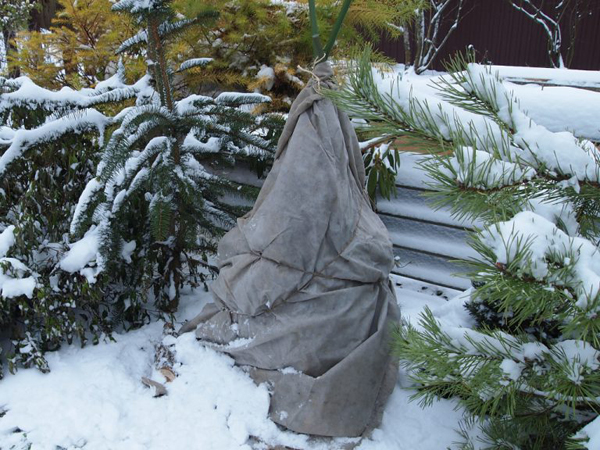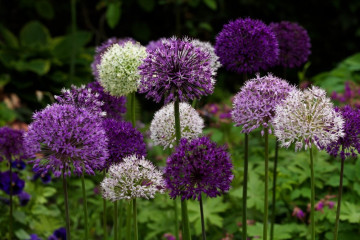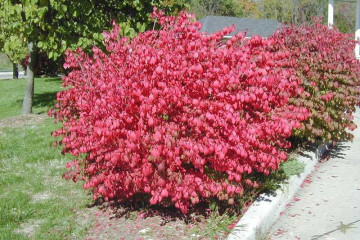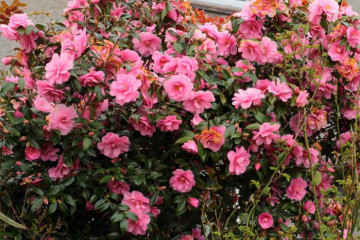Rhododendron: planting and care in the open field
Content:
- General landing rules
- When and how to plant rhododendrons outdoors
- Features of growing in cold climates
- What year does rhododendron bloom after planting
- What can you combine rhododendron with in a flower garden?
- Reproduction methods
- Pruning
- How to transplant a rhododendron to a new location
- Flower care in winter
- Problems, diseases and pests of the flower
Rhododendron is a perennial shrub that is quite popular among gardeners. The name of this species consists of two parts: "rodon" means "rose", and "dendron" means a tree. Its flowering can decorate both the garden and the room, and its unpretentious care makes the plant a good choice for beginners. But it is important to know a few nuances about how to plant and grow rhododendron in the garden.
General landing rules
Rhododendron is an evergreen shrub plant belonging to the Heather family. Belonging to the family explains the similarity of the flowers of this bush to the flowers of the rose. There are about 1000 varieties of rhododendron, among them there are not only shrubs, but also trees and indoor varieties.
Dwarf varieties of bushes, according to the description of flower lovers, are successfully grown in apartments, especially on balconies and loggias. Most often, rhododendron is present as a tree in garden plots or summer cottages.
Planting rhododendron outdoors in summer
It is not recommended to plant a rose tree in summer. Dry weather and intense sunlight have a detrimental effect on the survival rate of seedlings.
If you need to plant a plant in the summer, it is important to take into account several rules:
- Planting is possible only 2 weeks after the flowering period of the rhododendron. In temperate climates, the plant blooms from May to June, which means that the favorable period for planting it begins in July.
- It is better to plant a shrub during a rainy period. Wet weather will eliminate the risk of drying out the seedling, will help it take root faster.
- It is important to protect young plants from direct sunlight. This can be done with the help of a competent choice of a landing site or arranging a canopy.
Before planting a rhododendron, it is better to remove the flowers on it from the seedling. In this case, the plant will spend energy not on flowering, but on rooting.
Planting rhododendron in open ground in spring
Experts believe that the optimal time of the year for planting a rose tree in the ground is spring, more precisely, the period from April to mid-May. It is important here not to delay until the flowers begin to tie on the bushes.
Sometimes an ordinary rhododendron is planted in autumn, but for the middle lane it is better to choose spring. The plant must have time to take root before the cold weather, gain strength for wintering.
When and how to plant rhododendrons outdoors
It is much more difficult to create suitable conditions for this bush plant outdoors than in an apartment. It is necessary to adhere to the rules both when choosing a place for growing a rhododendron, and when to plant it.
Optimal planting time
As mentioned above, rose bushes are planted in the ground in spring or autumn.But it is important to choose not only the season, but also the right weather.
Quiet cloudy weather, without rain or wind, which will last for several days after disembarkation, is ideal. This will provide the necessary shading and save the drought-sensitive plant from drying out the soil, which means it will make it easier for the gardener to water.
Site selection
On the site where it is planned to plant a flower garden, there should be no through wind and direct sunlight. A good option would be to sit near a building wall, in a patio, or in the shade of a tall tree.
How to water properly
Watering is best done with soft water. Standing well water or rainwater is perfect. At the same time, it should not be icy, so as not to freeze the roots of the plant (it is especially important to monitor this in early spring).
It is good if there is a constantly filled barrel on the site. In this case, the water will have time to settle and heat up to the optimal temperature, which is also useful in caring for other plants.
Rhododendron is a moisture-loving flower. The soil around should not be dry, otherwise the leaves will begin to lose their shine and elasticity. As soon as the leaves turn dull, you need to water the plant so that the moisture passes to a depth of about 30 cm.
Wet or dry place
Based on the foregoing, we can conclude that the soil for growing rhododendron should be moderately moist.
For arid regions, regular watering will not be enough. It is important to create lush landscaping of the site, which will help not only shade it, but also regulate the humidity of the air. A good solution would be to install automatic sprinklers.
But frequent watering, as well as a prolonged period of rains, can harm the plant. If the region has frequent and heavy rainfall, it is worth considering creating a canopy for the plant.
Landing pit and soil
For rhododendron, both the rules of planting and care in the open field and the composition of the soil are important. It should be light enough, permeable to air and water.
Among the components suitable for the preparation of a soil mixture, one can distinguish sand, peat, leafy soil, coniferous needles and bark, peat. If there are coniferous forests in the region, the soil from there is perfect if mixed with peat in a small amount.
To check the acidity indicators, you need to stir a little soil in water, dip a litmus paper into it. The required indicator is its light orange color.
You can raise the acidity with plant-friendly agents like citric acid, oxalic tincture or food vinegar.
The planting pit should be twice as wide as the earthen coma with the root system of the seedling, at a depth of at least 0.5 m. Drainage must be poured at the bottom of the pit, for this the following are suitable:
- coarse sand;
- fine gravel;
- shards of red brick;
- pebbles;
- pine bark.
The drainage layer should be higher than the maximum elevation of spring waters. This is done to prevent waterlogging after the snow melts.
Features of growing in cold climates
For cold regions (Siberia, the Urals, the Far East), it is better to choose cold-resistant rhododendrons. Growing and caring for a plant in a summer cottage in this case will be easier.
Suitable varieties:
- Golden Lights;
- English Roseum;
- Roseum Elegance;
- Nova Zembla;
- PZhM Elite.
The best option in the case of a cold climate would be to organize a greenhouse-gazebo in the garden area. Inside a glass or plastic structure, you can not only plant a rose tree, but also plant other types of flowers, and also install a bench and a table for summer relaxation.
It is important to take into account that in such regions, planting seedlings should be carried out only in spring, when the plant is not yet blooming. The rhododendron must have time to take root before the onset of cold weather.
For the winter, the bushes will have to be closed using classical garden methods to avoid its death during prolonged frosts. It is advisable to open the rhododendron after wintering in March, immediately after the snow melts.
What year does rhododendron bloom after planting
Vegetative varieties of rhododendron can bloom fully the next year after planting. The first flowering (in the year of the seedling planting) must be cut off so that the plant gains strength for active growth and development.
What can you combine rhododendron with in a flower garden?
It is important to combine rhododendron garden correctly with other plants on the site. The roots of this plant are located shallow in the soil, they have a surface type of system. Its "neighbors" must have a tap root system. This is necessary so that the nutrients in the soil are enough for all plants and they do not conflict with each other.
Excellent neighbors of a rhododendron in the form of a bush will be oak, pine or larch. On the one hand, their branches will provide the necessary shading, on the other, their deep root systems will not intersect and take away nutrients from the shrub. You should not plant rhododendron next to a birch, maple, linden, chestnut.
Rhododendron and hydrangea nearby
Hydrangea is a deciduous shrub that is a classic neighbor for a shrub rhododendron. For a single flower garden, woody varieties of hydrangeas that bloom well in the shade (Precox, Yellow Floribunda) are suitable.
In combination with rhododendrons, hydrangeas fill the void of flowering in the second half of summer. In addition, the conditions for caring for plants are similar. The only condition is to leave free access to hydrangeas for autumn pruning of shoots.
Reproduction methods
The rhododendron plant reproduces in three ways: by seeds, layering and cuttings. The seed method allows you to get plants with improved properties, but it takes a lot of time and effort. The first flowering can be obtained only 5-6 years after germination.
Most often, this flower is propagated by layering:
- In the spring, a small young shoot is selected.
- A groove with a depth of 15 cm is prepared, into which the shoot is placed in the middle part.
- The ditch is filled with soil with peat.
- The upper part of the shoot is tied to a vertical peg.
- In the fall, the cuttings are cut from the mother plant and transplanted to a new location.
Layers can be buried both arcuate and horizontally - it depends on which method is more convenient in this area.
Rhododendron cuttings are as follows:
- Selected half-lignified shoots, cut to a length of 5-8 cm.
- At the bottom of the shoots, leaves are removed, the cut is placed in a root growth activator.
- After 16-20 hours, the shoots are placed in the soil of peat and sand, covered with a greenhouse.
- Deciduous varieties take root after 1.5-2 months, evergreen varieties - after 3-4 months.
It is necessary to plant rooted cuttings together with the soil that was poured into the rooting container.
Pruning
Rhododendron care involves pruning the plant in the spring. You need to get rid of dried branches in order to achieve rejuvenation of the bush for the flowering season.
It is not necessary to form the crown of this shrub, since it itself has a neat appearance. With the help of pruning, you can only adjust the height of the bush or the spreading of the crown.
As mentioned above, it is important to cut off faded inflorescences in time in the summer.
How to transplant a rhododendron to a new location
Since it is rather difficult to take good care of a rhododendron in mid-latitudes, the plant may not look so bright next year. An unfortunate location or freezing winters can also greatly affect the lushness and regularity of a rosewood.
Transplanting a young plant will help correct the situation. This is done in early spring or early autumn. It is important to choose a period when the weather is cool enough and the air humidity is high.
Flower care in winter
Caring for a rhododendron after a lush flowering consists in its abundant watering in dry weather. Starting in autumn, woody roses do not need to be watered if the rainy season has begun. In November, you can start insulating the bushes at the roots with a dense layer of peat.
In order for the plant to overwinter, its roots must be covered with:
- a layer of spruce or pine branches;
- one or two layers of burlap.
It is important to shelter young bushes from the wind. Some gardeners build makeshift huts from planks, slate and other materials at hand for the winter. The insulation is removed immediately after the snow melts, in early spring.
Problems, diseases and pests of the flower
Various pests and diseases are often found in heather shrubs. Treatment methods have long been known, and even inexperienced growers can save the rhododendron from death.
Rosewood pest treatment methods:
- Gastropods from the bush will have to be collected by hand; to prevent their appearance, Thiram's solution is used.
- Bed bugs, spider mites or weevils are destroyed by Diazinon. The tool treats not only the bush, but also the surface of the earth under it.
- With the help of Karbofos, the remaining insects are destroyed.
When using any means, it is important to strictly follow the instructions attached. The concentration of chemicals can harm other plants in the flower garden.
Fungal diseases are eliminated in the following ways:
- Rust and stains are removed with Bordeaux mixture.
- When yellowness appears on the leaves due to chlorosis, iron chelate is added to the irrigation water.
- When a cancer disease appears, the affected branches are cut off completely or to a healthy part of the tissue.
In order to prevent diseases in early spring and late autumn, the trees are sprayed with a Bordeaux mixture.
In advanced cases, transplanting a bush to a new well-prepared place will help.
The rhododendron will become a real decoration of the garden or summer cottage. Planting and caring for this shrub takes effort, but the time and money spent will pay off in lush and aromatic flowering within a few months.

